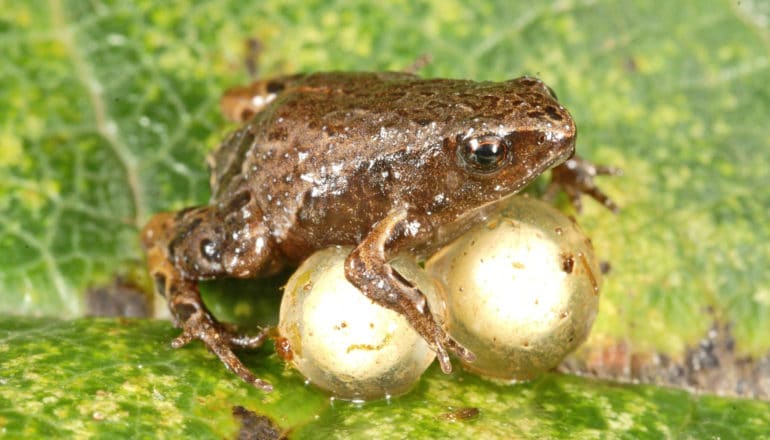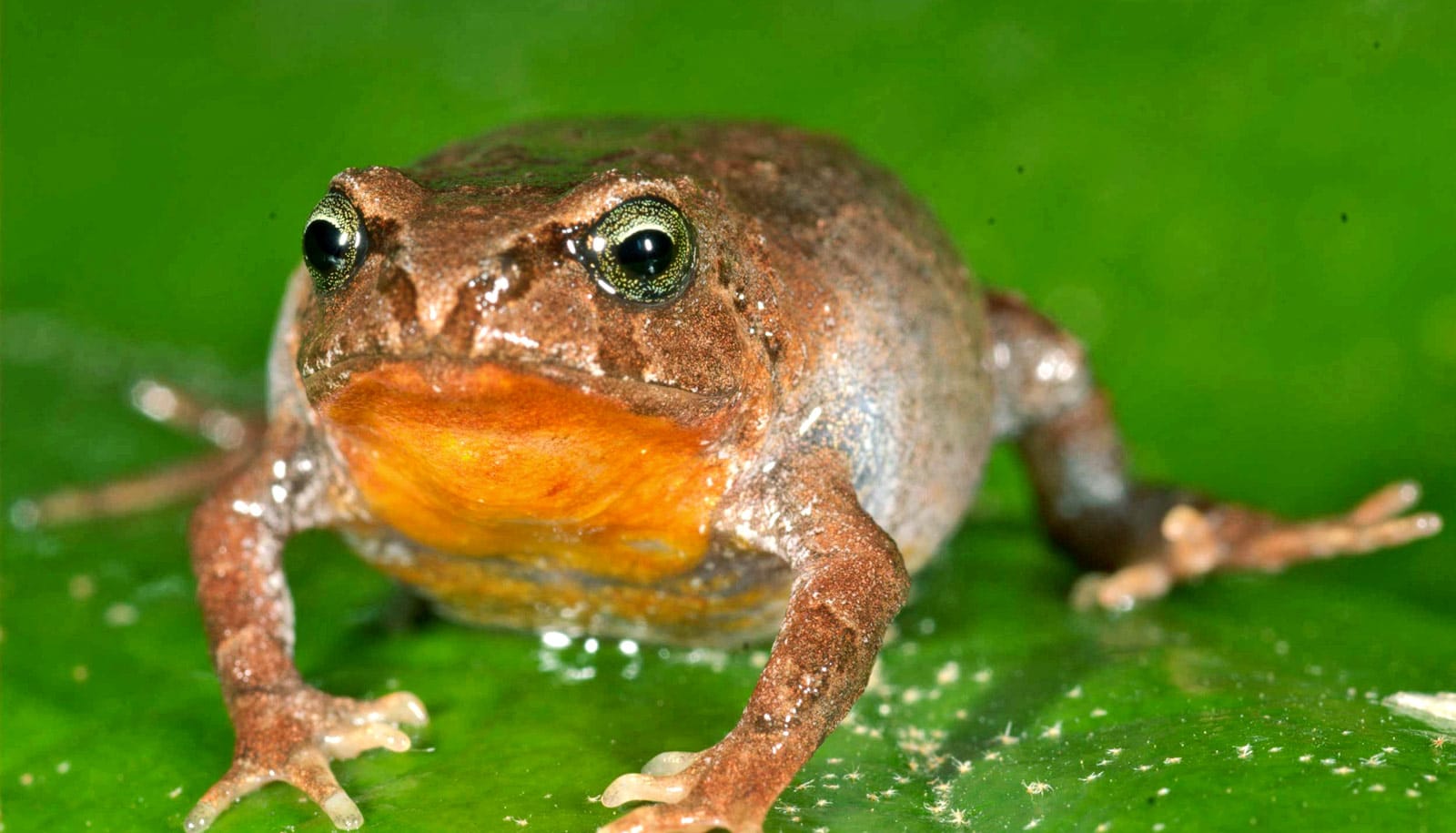Future climate warming threatens frogs in the lowlands of Peru more than their cousins at higher elevations, new research suggests.
That’s because lowland frogs already live near the maximum temperatures they can tolerate, while high-elevation amphibians might be more buffered from increased temperatures.
Previous studies have suggested that lowland reptiles and amphibians are especially vulnerable to climate warming. But in most cases, those conclusions were based on computer modeling work that incorporated a limited amount of field data.

“Understanding how species respond to climatic variation is critical for conserving species in future climatic conditions. Yet for most groups of organisms distributed in tropical areas, data about species’ critical thermal limits are limited,” says Rudolf von May, a postdoctoral researcher in the ecology and evolutionary biology department at the University of Michigan.
“I think the contribution of our study is that it focuses on a group of closely related frog species distributed along a single montane gradient and that it includes empirical data on species’ tolerance to heat and cold, as well as air temperatures measured along the same gradient.”
Male glassfrogs could win ‘dad of the year’
In the process of conducting the study, which involved more than two years of fieldwork, von May and colleagues identified three previously unknown frog species, which will be described in future work.
The study focused on the thermal ecology and evolution of 22 species of land-breeding frogs, which are also known as terrestrial-breeding frogs, in southern Peru’s Manu National Park and surrounding areas. Sampled elevations ranged from the Amazon River floodplain, at 820 feet above sea level, to 12,000-foot Andes Mountains peaks.
The region in and around Manu National Park is known for long-held records of biodiversity including more than 1,000 species of birds—about 10 percent of the world’s bird species—and more than 1,200 species of butterflies. In addition, the park contains an estimated 2.2 percent of the world’s amphibians and 1.5 percent of its reptiles.
While most frogs lay eggs in water, terrestrial-breeding frogs use a specialized reproductive mode called direct development: A clutch of embryos hatch directly into froglets; there are no free-living tadpoles. Terrestrial-breeding frogs form a diverse group that can exploit a wide variety of habitats, as long as those locations contain sufficient moisture.
For the study, researchers looked at how closely related frog species differ in their elevational distribution and their tolerance to heat and cold in a region of the tropical Andes where temperature increase is predicted to be detrimental for most species.
“These measurements were taken in order to determine whether tropical frogs could take the heat—or cold—predicted for tropical regions as a result of climate change,” says von May, first author of the paper in the journal Ecology and Evolution.
Heat doesn’t stop tree frogs from finding a mate
The frogs’ tolerance to heat varied from 77 degrees Fahrenheit to 95 degrees and that, as expected, highland species tolerated much lower temperatures than lowland species.
Frogs living in high-elevation grasslands tolerated near-freezing temperatures, which they experience during the dry season, as well as moderately high temperatures, which they may experience during sunny days.
When considering the temperature of the microhabitats in which the frogs live, the results suggest tropical lowland species live close to their thermal limit. Amphibians living at high elevation might be more buffered from future temperature increases because the highest temperatures they can tolerate are farther away from the maximum temperatures that they regularly experience in the wild.
Additional coauthors are from Southern Illinois University; the University of California, Berkeley; the Museo de Historia Natural de la Universidad Nacional de San Agustin in Peru; City University of New York; and the Australian National University.
The National Geographic Society, the National Science Foundation, the American Philosophical Society, the Rufford Small Grants Foundation, and the Amazon Conservation Association funded the work.
Source: University of Michigan



